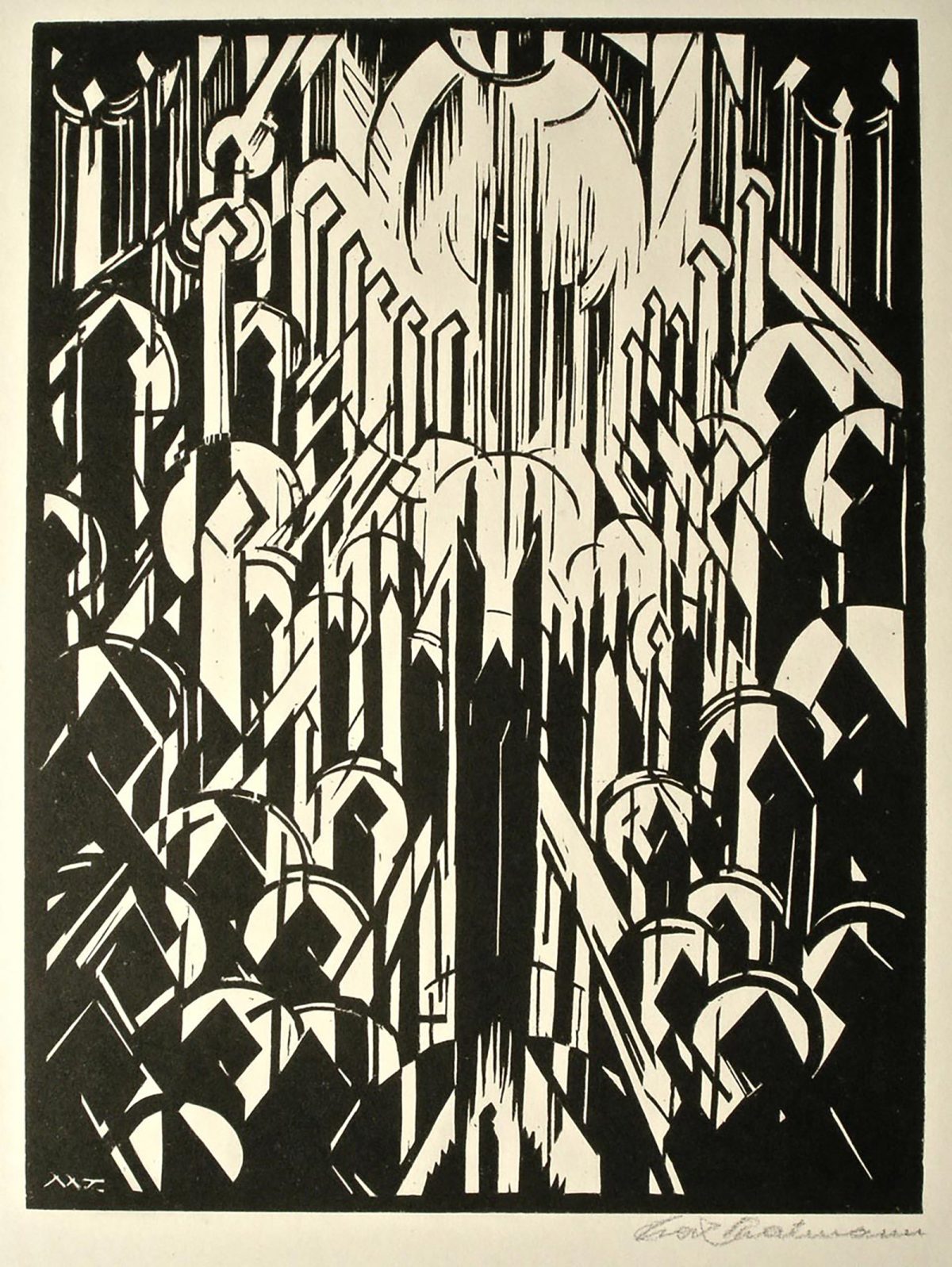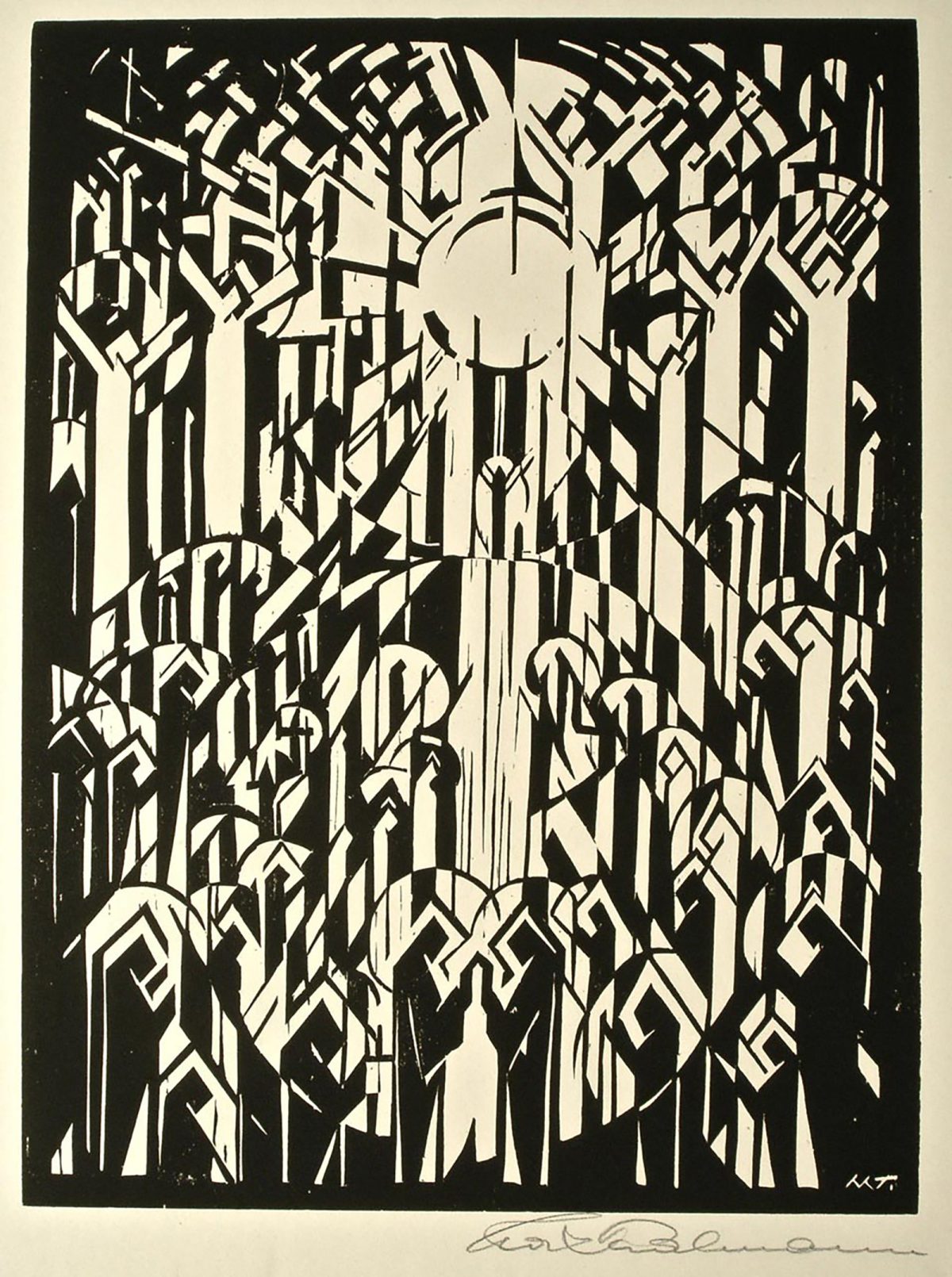
Max Thalmann was a German Expressionist (1890 – 1944) who produced three main portfolios of black and white woodcut prints: Cathedral (Der Dom), Passion, and America in Woodcuts (Amerika im Holzschnitt). A bookbinder by trade having been trained as such under Henry Van De Velde at Weimar, he also worked as a graphic designer and briefly taught at the Bauhaus before taking a trip to the US in 1923 to stay with his brother in Chicago, where he held a small exhibition, and visited New York.
Upon his return to Europe, he left his collection with his brother with dreams of someday moving to the United States, but he never did. During the 1930’s his work moved from woodcuts to drawings, watercolours, and pastels; most of which were inspired by a Nile River trip he took in 1930. Throughout the Nazi period of the 1930s he also designed over 150 books for the Eugen Dieterich publishing house in Jena, Germany.
Der Dom and America in Woodcuts : cathedrals of power
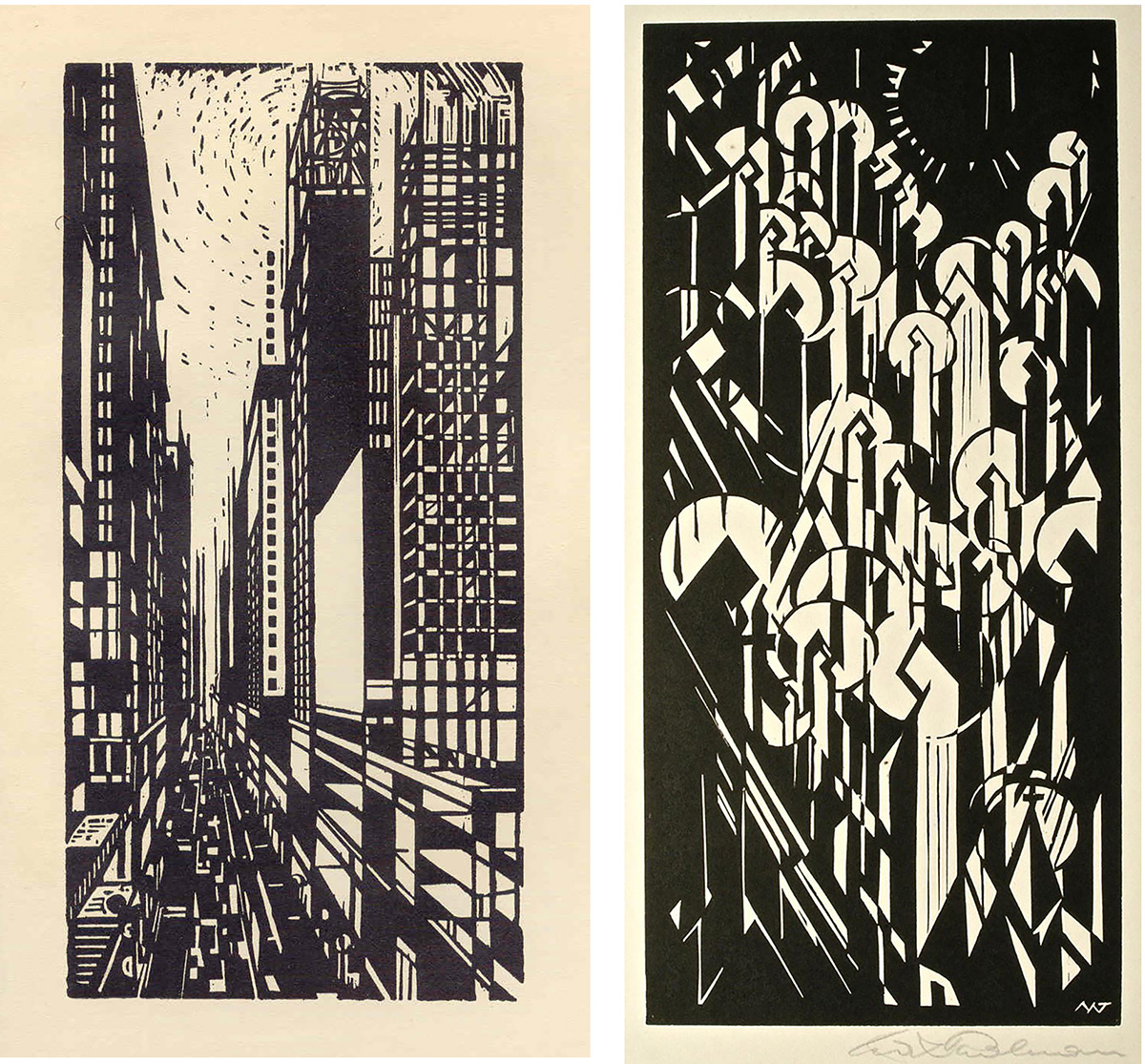
America in woodcuts (lefts) and cathedrals (right)
Cathedrals and skyscrapers have much in common in Thalmann’s art. Reminiscent of American painter Florine Stettheimer’s portrayal of New York’s skyscrapers as modern cathedrals, Thalmann looked up and wondered:
Der Dom plays inventively on the theme of figures and interiors, with spiritual evocations of Gothic architecture, arch, window and aisle in a visual language familiar to Thalmann’s generation of Expressionist artists. The sun flares in a variant on the Rose Window. A comparative image might be Feininger’s design for the 1919 Bauhaus manifesto. Thalmann’s repertoire of form is almost a musical synthesios of black and white in the ways we see in Kupka. It may be my misreading but there seems a proliferation of cowls and anonymous figures in procession. In the Amerika portfolio the shapes take on a more Cubic formulation without the sinuous shapes of the arch mouldings that occasionally evoke natural growth such as tree limbs. In Amerika the mechanical has come to dominate the composition.
– G.F.Hartlaub was a writer and art historian who specialised in writing about contemporary art, those associated with Expressionism and is credited with the generation of the critical term Die Neue Sachlichkeit in 1923.
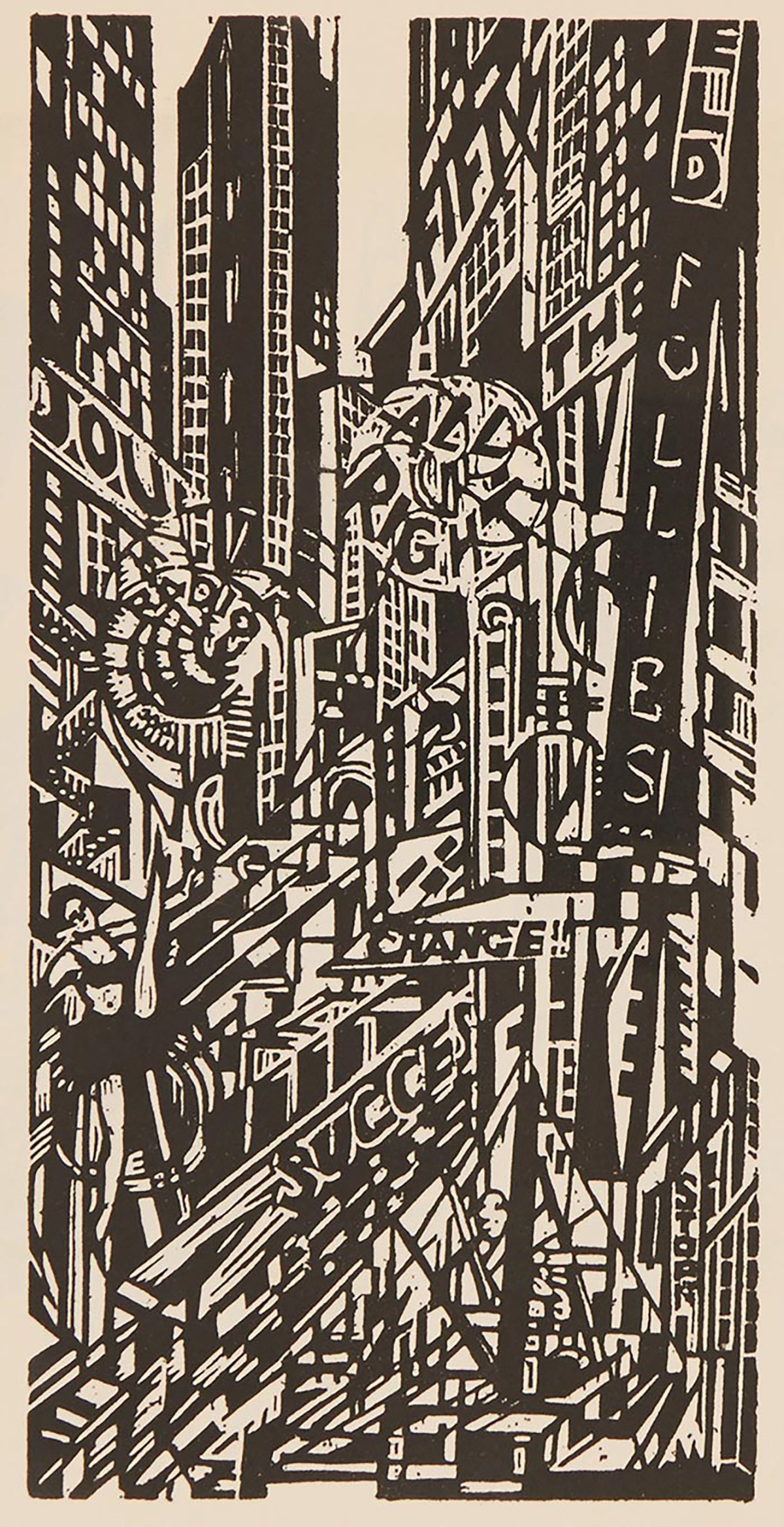
America in woodcuts
His images also embraced the Japanese concept of ‘Notan’ involving the interplay of light and dark. ‘Notan’ means dark versus light harmony, using the simple concept of contrasting light and dark shapes, or, black versus white.
The Passion
The 1920s and early 1930s were his most active and successful years as an artist. In 1921 Thalmann created the art folio Passion.
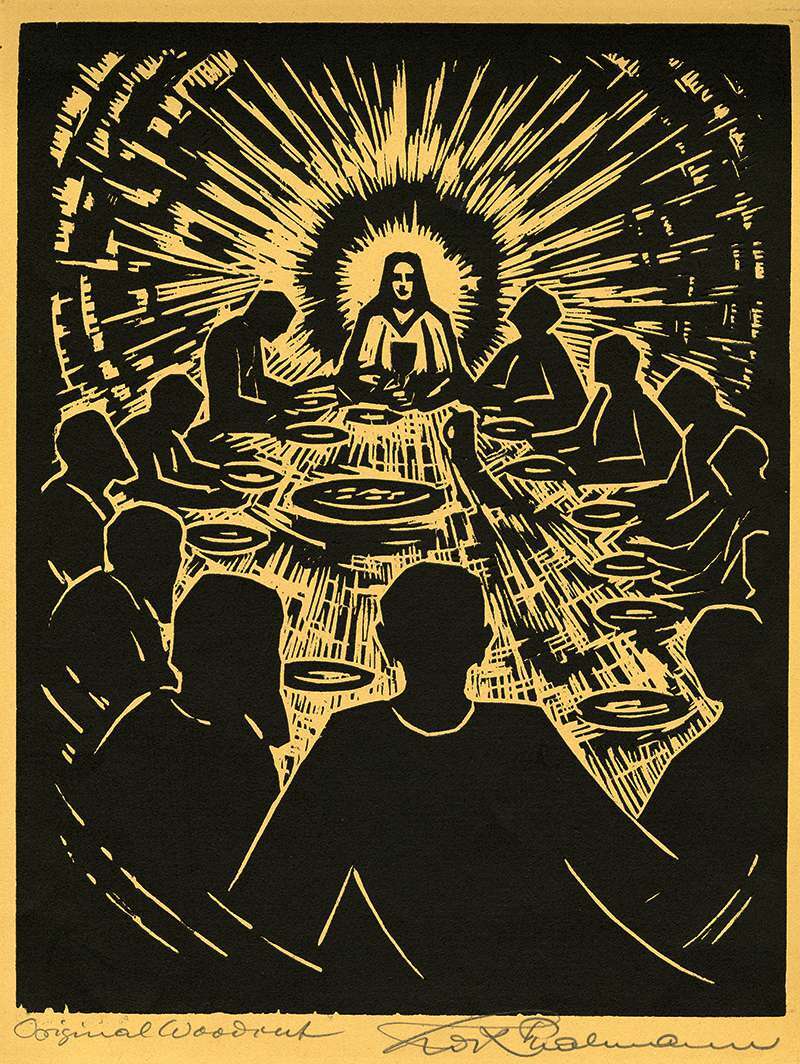
Max Thalmann (1890–1944), Last Supper, c.1920, woodcut, 14 1/4 x 11 1/8 inches. Brigham Young University Museum of Art, gift of Milton D. Heifetz.
In Last Supper Christ stands out as the only distinct personality among the unarticulated grouping of disciples. Christ’s figure pulsates with light and glory, against which his twelve disciples are silhouetted. The attention of those at the table as well as the viewer are drawn to Christ’s benevolent face. Rather than convey the subject with detailed forms focus or impassioned expressions, Thalmann uses simplified shapes, strong lines, and light and dark contrasts to create a palpable sense of poignant emotion.
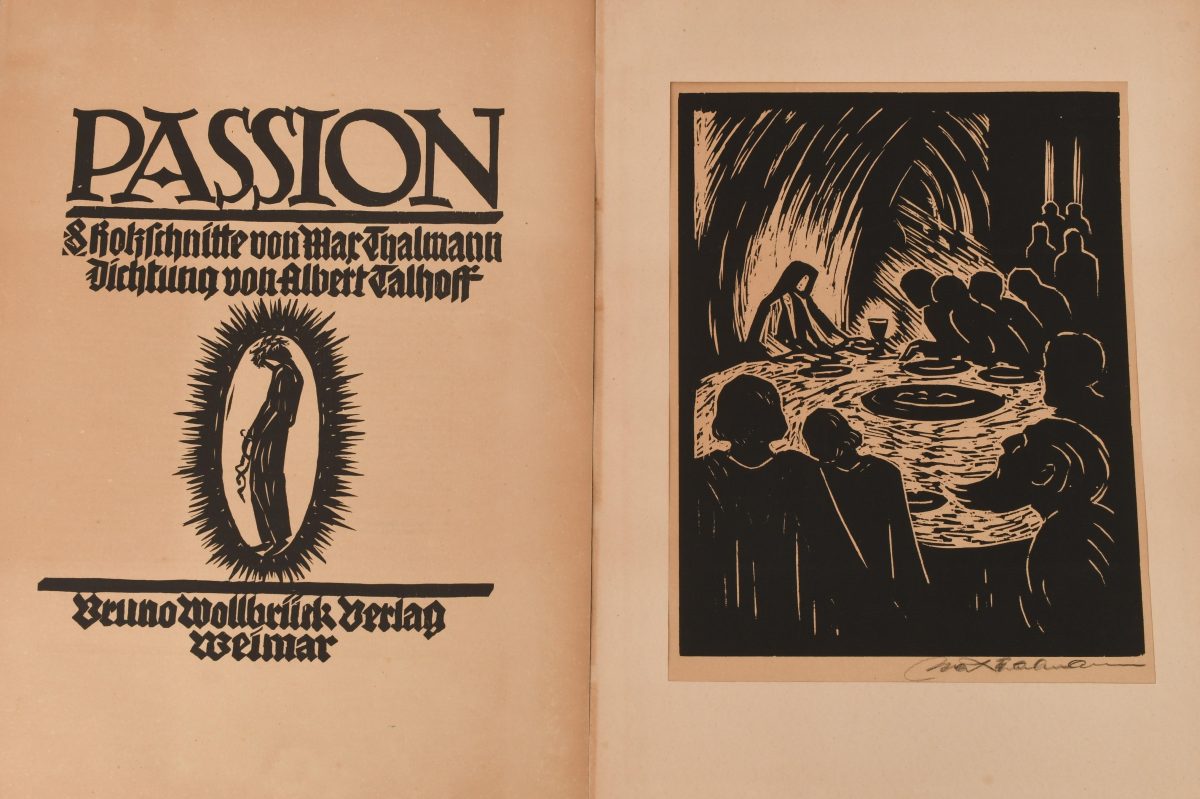
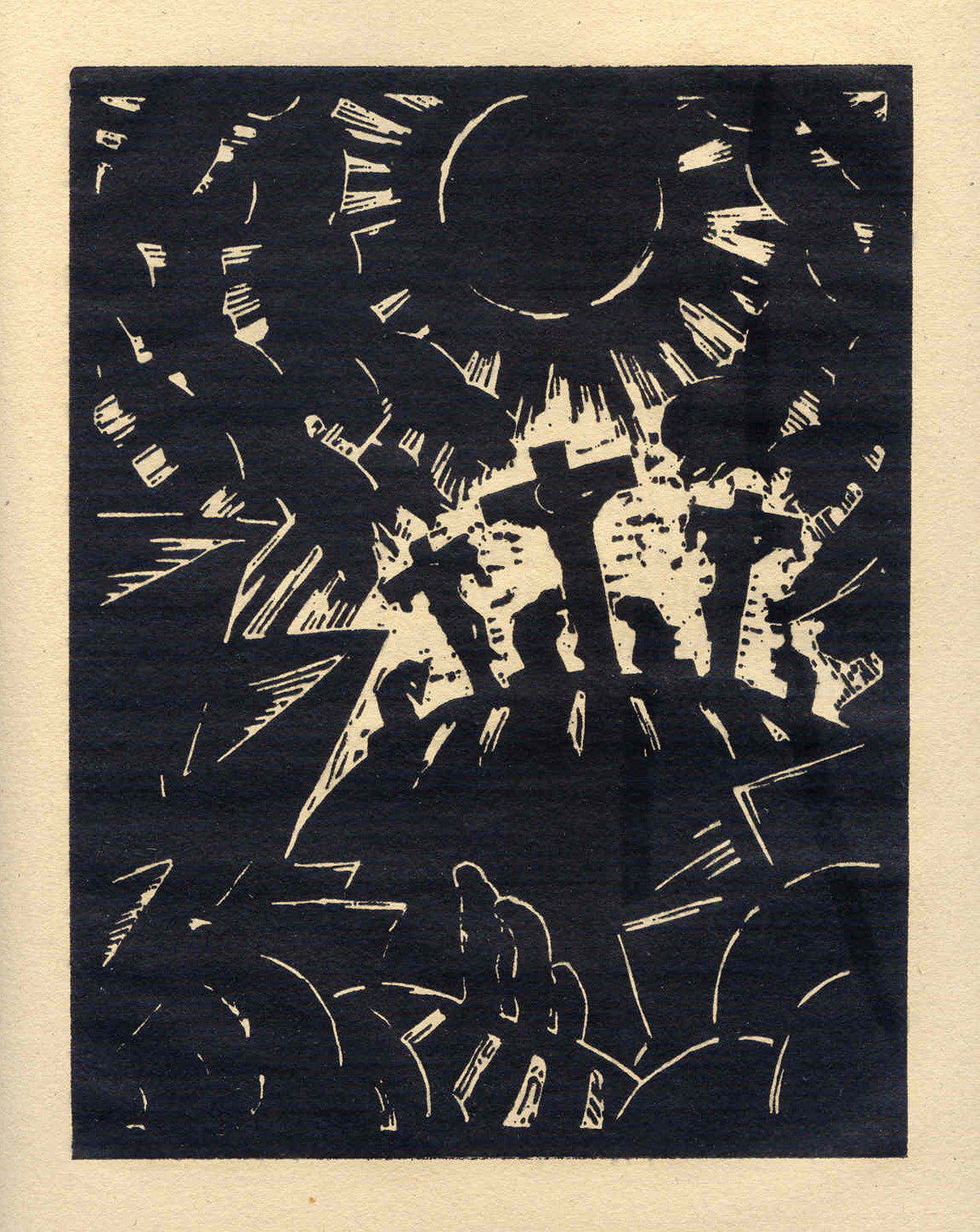
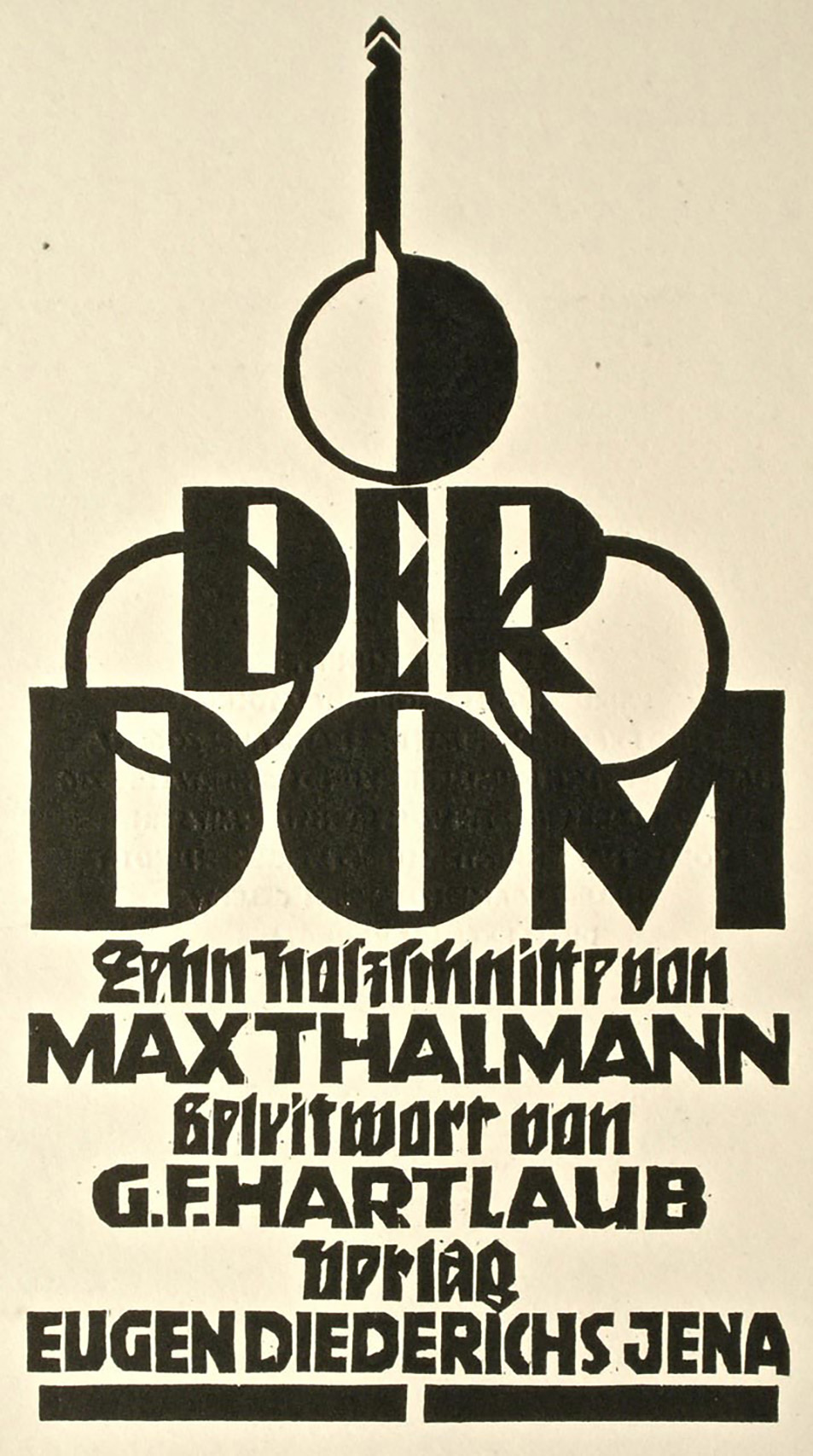
Would you like to support Flashbak?
Please consider making a donation to our site. We don't want to rely on ads to bring you the best of visual culture. You can also support us by signing up to our Mailing List. And you can also follow us on Facebook, Instagram and Twitter. For great art and culture delivered to your door, visit our shop.

